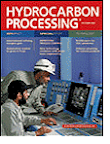Saturday, December 5, 2009
Display problem ? Click HERE
Recommended :
- Tips on Succession in FREE Subscription
- Subscribes to FREE Hydrocarbon Processing
 A primary factor in achieving highly reliable, effective sealing performance is to create the best fluid environment around the seal. Selection of the right piping plan and associated fluid control equipment requires a knowledge and understanding of the seal design and arrangement, fluids in which they operate, and of the rotating equipment. Providing clean, cool face lubrication, effective heat removal, personnel and environmental safety, leakage management and controlling system costs are among the specific factors that must be considered. API has established standardized piping plans for seals that provide industry guidelines for various seal arrangements, fluids and control equipment. API 682/ISO 21049 standards have default (required) connections and connection symbols for seal chamber and gland plate connections based upon the seal configuration. It is recommended that the latest edition of these standards be reviewed for up-to-date requirements, when these standards are mandated for a piece of rotating equipment.
A primary factor in achieving highly reliable, effective sealing performance is to create the best fluid environment around the seal. Selection of the right piping plan and associated fluid control equipment requires a knowledge and understanding of the seal design and arrangement, fluids in which they operate, and of the rotating equipment. Providing clean, cool face lubrication, effective heat removal, personnel and environmental safety, leakage management and controlling system costs are among the specific factors that must be considered. API has established standardized piping plans for seals that provide industry guidelines for various seal arrangements, fluids and control equipment. API 682/ISO 21049 standards have default (required) connections and connection symbols for seal chamber and gland plate connections based upon the seal configuration. It is recommended that the latest edition of these standards be reviewed for up-to-date requirements, when these standards are mandated for a piece of rotating equipment.
JohnCrane, one of the most reliable manufacturer for piping plan for seal has presented a simple booklet for piping seal plan. The intent of this booklet is to illustrate the common connections that are utilized for the various piping plans, regardless of the equipment type, and therefore use generic names for connections. The end user and/or equipment manufacturer may have specific requirements that dictate what connections are to be supplied and how they are to be labeled. In the piping plans illustrated, the “Flush” connection noted for the inboard seal of a dual seal may originate from a number of suitable sources. For example, the “Flush” for piping plans 11/75 or 32/75 may be the product (Plan 11) or an external source (Plan 32).
- Tips on Succession in FREE Subscription
- Subscribes to FREE Hydrocarbon Processing
JohnCrane, one of the most reliable manufacturer for piping plan for seal has presented a simple booklet for piping seal plan. The intent of this booklet is to illustrate the common connections that are utilized for the various piping plans, regardless of the equipment type, and therefore use generic names for connections. The end user and/or equipment manufacturer may have specific requirements that dictate what connections are to be supplied and how they are to be labeled. In the piping plans illustrated, the “Flush” connection noted for the inboard seal of a dual seal may originate from a number of suitable sources. For example, the “Flush” for piping plans 11/75 or 32/75 may be the product (Plan 11) or an external source (Plan 32).
This piping seal plan booklet illustrate and describe piping seal plan features as an aid to help you determine what support system requirements will maximize the performance reliability of your fluid handling rotating equipment application.
Source : JohnCrane
Download
Source : JohnCrane
Download
Related Post
- Hydraulic...
- Visualize Spraying Nozzle Performance
- Pump Pressure Versus Head
- Why Centrifugal pump NPSH required increases with flow ?
- Tips for Centrifugal Pump
- Rule-of-thumb For Minimum Flow Recycle
- Basis & Tips on Setting Centrifugal Pump "Warming" Recycle Flow
0 Comments:
Post a Comment
Let us know your opinion !!! You can use some HTML tags, such as <b>, <i>, <a>
Subscribe to Post Comments [Atom]
Home:
<< Home